Large semiconductor crystals for security and medical imaging (Kromek)
Submitting Institution
University of DurhamUnit of Assessment
PhysicsSummary Impact Type
TechnologicalResearch Subject Area(s)
Physical Sciences: Other Physical Sciences
Chemical Sciences: Macromolecular and Materials Chemistry, Physical Chemistry (incl. Structural)
Summary of the impact
Research on vapour growth of semiconductor compounds led to a key
breakthrough in growing large crystals which form the basis for sensitive
X-and gamma-ray detectors. The process was commercialised by a Durham
University spin-out company, Kromek Ltd., which floated on AIM at £55M and
has over 100 employees in the UK and USA. The X-ray detectors are in use
in Kromek's security systems for screening liquids at airports,
significantly reducing restrictions on duty free goods. This application
won the $400,000 international prize in the 2009 Global Security
Challenge. The company also markets gamma-ray detectors for nuclear
isotope identification. These have won contracts totalling $7.5M from the
US Defense Threat Reduction Agency and are in use at Fukushima.
Underpinning research
The late Professor Andy Brinkman (member of Durham Physics department
from 1980-2010) led an established research group that worked on the
growth, characterisation and exploitation of group II-VI compound
semiconductors. He had a longstanding interest in CdTe and CdZnTe, which
form the basis of energy sensitive X-(CdTe) and gamma-ray (CdZnTe)
detectors, and can also be used as substrates for thermal imaging devices.
However, commercial applications of these were limited by problems in
growing large crystals. Standard melt growth processes only produce wafers
less than 2 inches in diameter, whereas medical imaging applications
require larger area detectors. While these can be made by butting several
smaller crystals together, this is uneconomic as the cost scales with the
number of crystals rather than their size.
Prof Brinkman (in collaboration with Profs Tanner (Durham Physics
1973-present) and Durose (Durham Physics 1992-2011) led a BRITE-EURAM
grant (1994-1997), with major academic partners including the Universities
of Freiburg: Germany, Athens: Greece and Ancona: Italy) to explore and
develop methods to improve the growth of CdTe. He realised that vapour
growth was not subject to the same size limitations as melt growth
processes, but the resulting material was largely polycrystalline as the
crystal growth was disrupted by the heat from the vapour source. The key
breakthrough in growing high perfection single crystals was made by Dr
John Mullins, a postdoc working with Prof Brinkman in Durham, funded by
the BRITE-EURAM grant. He realised that the vapour source and deposition
region could be thermally decoupled by using a bent tube rather than a
straight tube, so that the growing crystal was not heated directly by the
source. The first high quality CdTe crystals were grown using this
technique in 1997, and the process was patented in 1998 [P1]. The first
results were published in a peer reviewed journal in 1999 [1], with a full
description of the growth system in 2000 [2].
Research on this technique continued with £0.17M grant support from EPSRC
(2000-2003). The potential of the process became increasingly clear, and
development of this into a commercial product was supported by a £0.15M
PPARC PIPPS grant (2005-2006) and £0.93M from a DTI basic technology award
via EPSRC (2006-2010). This work culminated in 2007 with the
heteroepitaxial growth of the first high perfection wafers of CdTe with
good electrical qualities, using GaAs as the substrate [e.g. 3-5]. By 2009
they could scale this up to grow 4 inch diameter crystals of CdTe, and in
2011 succeeded in making similarly large crystals of CdZnTe [6].
References to the research
All Journals are international and peer reviewed
[P1] Granted Patents: Apparatus and process for crystal growth, US
6375739 B1, EP1019568A1 filed July 27 1998
Grants to Prof Brinkman:
EPSRC GR/N04287 £177,480 Jan 2000 to Dec 2002. Controlled Vapour Growth of
CdTe
PIPPS PP/C503470/1 £152,545 Jan 2005 to Dec 2006. Evaluation of
Foreign and Hybrid crystal growth
EPSRC EP/DO48737/1 £931,012 Jul 2006 to June 2010.New Materials for High
Energy Colour X-ray Imaging
Details of the impact
In 2003, with venture capital from Prof. Max Robinson, a business angel
who was at that time a member of the Durham University Technology Transfer
team, the intellectual property was licensed to a spin-out company, Durham
Scientific Crystals, subsequently renamed Kromek, in order to directly
exploit the new vapour growth process. Supplemented by a DTI SMART award,
the first commercial crystal growth facility was established in the
company's first premises in the Mountjoy Research Centre, which was then
the University business incubator. There were initially two staff members,
Drs Arnab Basu and Ben Cantwell, both of whom had just completed their
PhDs with Prof Brinkman in the Physics Department in Durham. The company
rapidly outgrew its original accommodation and moved to NETPark (North
East Technology Park), Sedgefield in 2005. Continued growth necessitated a
move to larger, purpose built premises in NETPark (see Fig 1 & 2),
opened by Prince Andrew in 2010 [C1]. The company now employs over 50
people, including several sub-contractors, at NETPark.
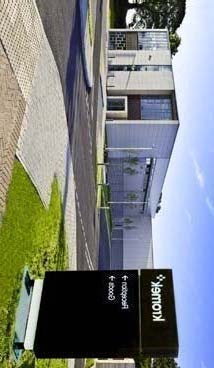 Fig 1 Kromek’s NETPark (Sedgefield) premises
Fig 1 Kromek’s NETPark (Sedgefield) premises
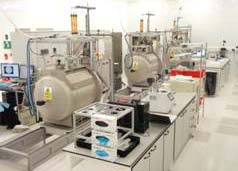 Fig 2 Part of the crystal growth facility
Fig 2 Part of the crystal growth facility
The business model initially focused on the growth of large, high purity
CdTe and CdZnTe crystals for sale to other companies building X-and
gamma-ray detectors or infrared imaging systems. However, the company
then took the strategic decision to move up the product value chain by
fabricating their own imaging detectors, incorporating ASIC (Application
Specific Integrated Circuit) electronics. The potential of these attracted
£1M investment in 2005 from Amphion, the UK arm of a US venture capital
company investing in high tech start-up companies. Subsequent calls for
venture capital resulted in investment of over £24M, with a round in 2009 raising £12.3M [C2].
To ensure direct supply of the ASIC technology, Kromek bought Nova
R&D in 2010, an electronics company employing 13 staff at its
Riverside, California base [C3]. In June 2011, Kromek and Nova held 34
granted patents. In February 2013, Kromek acquired Endicott Interconnect
Detection and Imaging Systems (EIDS), based in Saxonburg, PA, USA in a
strategic move to consolidate the market in melt-grown CdZnTe material.
This acquisition added another 40 staff, 25 patents and 300 trade secrets
to the Kromek Group. EIDS is now trading again as eV Products [C4].
Initially the company explored applications in the medical imaging market
where there are multiple applications for colour X-ray imaging. Kromek had
a $1.5M contract from the US National Institute for Health to develop an
advanced X-ray camera for breast cancer detection, building on expertise
developed from an earlier contract with Siemens to build pixelated X-ray
detectors for computerised tomography (CT) scanners [C5]. However,
security systems presented even more opportunities with new requirements
for screening airport carry-on baggage since 9/11. Supported by the UK
Home Office and its investors, the company incorporated their detectors
into X-ray systems for liquid explosive detection. In 2008 (the same year
it was awarded the ISO2001 manufacturing quality stamp) it launched a
bottle scanner which can deal with individual containers. The system, now
in use at airports around the world, has a direct impact on all airline
passengers as it allows duty free liquids to be carried through airport
security screens [C6]. The liquid scanning system (see Fig 3) readily
distinguishes Coca-Cola from Pepsi, and was awarded the
newly created Standard 3 for Liquid Explosive Detection Systems (LEDS)
following recent regulatory trials (August 2013). Kromek Chief Executive
Officer, Dr Arnab Basu said: ''This achievement, together with a 20%
reduction in scan time, design changes that include a much faster and
simpler user interface, and a roadmap to further reduce the scanning
time by 50% put Kromek's explosives detection equipment ahead of the
pack.....What makes the Identifier unique is its ability to scan metal
cans, Tetra Pak and foil pouches, in addition to all types of glass
and plastic containers; this means the Kromek Identifier is the only
ECAC Standard 3 approved system that can scan every container type with
a simple one button operation." [C7]
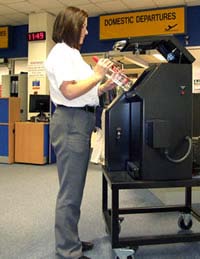 Fig 3. Bottle scanner in use in airport security
Fig 3. Bottle scanner in use in airport security
The company went from winning regional awards in 2007 (Business Link
North East Business award, Business Innovation Centre), to national
competitions in 2008 (IET Innovation award), and European success in 2009
(Western Europe Global Security Challenge for Best Security SME). This
series culminated in the $400,000 Global Security Challenge award in 2009
for Best Security SME, while Dr Arnab Basu, now Kromek's CEO, won the 2009
Ernst and Young title of UK Young Entrepreneur of the Year [C8].
Other security applications use CdZnTe (CZT) crystals for gamma-ray
detection systems. In 2010 the company won a $4M contract with the US
Defense Threat Reduction Agency (DTRA) to develop detectors for
radioactive materials as part of its on-going anti-terrorist measures
[C9], and the resulting products are also on sale as handheld radiation
monitors e.g. Kromek's GR1 detectors (Fig 4) which are in use at Fukushima
for decommissioning the nuclear plant [C10]. These can be combined with a
wall climbing, radio controlled robot to provide nuclide identification in
hard-to-reach, high-risk environments where safety is paramount (Fig 5).
The company has also developed a home radiation monitor, RadAngel, which
can be used with most iOS or Windows devices. This product was launched in
Japan in July 2012 and is now available directly to consumers for around
$2000 (Fig 5). Other Kromek products [C11] include the RayMon10 handheld
radiation monitor and isotope identifier, and RadViz a CZT based gamma ray
camera that enables remote nuclear characterisation with 3D dose mapping
capability for the nuclear industry. Kromek was awarded a further $3.5M
from the DTRA in collaboration with Northrop Grumman.
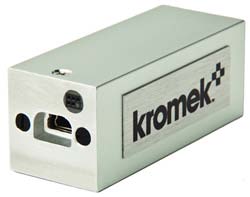 Fig 4: GR1 gamma ray detector as used in Fukushima
Fig 4: GR1 gamma ray detector as used in Fukushima
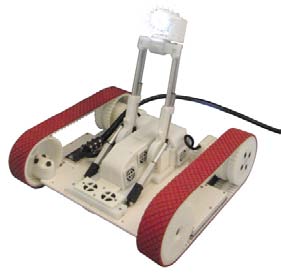 Fig 5: radio controlled wall climbing vehicle with GR1
Fig 5: radio controlled wall climbing vehicle with GR1
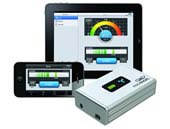 Fig 6: RadAngel home radiation monitor
Fig 6: RadAngel home radiation monitor
Since the original company spun out, there has been continuing research
collaboration between the University and the company. Prof. Tanner, a
member of staff of the Physics Department, is the Deputy Chairman of the
company board and Prof Brinkman was a Kromek Director until his death in
2011. The company has supported PhD students, as well as staff time buyout
for Prof Brinkman. A former CASE student in the group, (Paul Scott), and
an ex-PhD student of Prof Tanner, (Alex Pym), have been employed by
Kromek, as is the original inventor of the growth technique, Dr. John
Mullins.
The company was valued in May 2013 (and also on 7th November)
at £74M. Turnover grew from £13,231 in 2006-7 to £2.8M in 2011-12 and
£2.7M for the year ending April 2013. It is predicted to be £5.07M for the
year ending April 2013; shipments of product and services in April 2013
alone reached £1M. The order book stood at $5.85M in May 2013. The Kromek
Group plc was listed on the London AIM Stock Exchange on 16th October 2013
at a value of £55M, raising £15M on the floatation.
Sources to corroborate the impact
C1 Prince Andrew opening Kromek building
http://www.nebusiness.co.uk/business-news/latest-business-news/2010/07/14/kromek-s-crowning-glory-51140-26850379/
C2. Amphion 2009 Investment funding http://www.amphionplc.com/regulatory_03152010.php
C3 Nova R&D acquisition http://www.kromek.com/aboutus_nova.asp
C4 EDIS now ev products acquisition http://www.kromek.com/aboutus_evproducts.asp
C5. Medical imaging
http://www.proactiveinvestors.co.uk/companies/news/23431/amphion-innovations-partner-kromek-secures-us15m-contract-from-umass-23431.html
C6. Newcastle airport trials http://news.bbc.co.uk/1/hi/uk/8244150.stm
C7 Identifier bottle scanner achieves Standard 3 for Liquid Explosive
Detection Systems
http://www.kromek.com/news_loadstory.asp?NewsID=431&KeepThis=true&TB_iframe=true&heigh
t=520&width =800
C8. Awards http://www.kromek.com/news_awards.asp
C9 US Defence Threat Reduction Agency
http://www.nebusiness.co.uk/business-news/latest-business-news/2009/12/03/kromek-secures-2-4m-deal-with-us-government-51140-25309390/
C10 GR1 in use at Fukushima
http://www.iii.co.uk/investment/detail/?display=discussion&code=cotn%3AAMP.L&it=le&action=detail&id=8795623
C11 Kromek Products http://www.kromek.com/products.asp